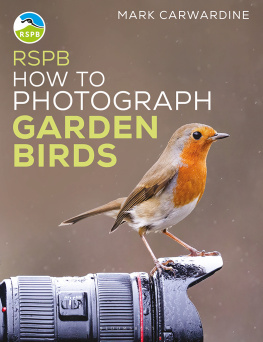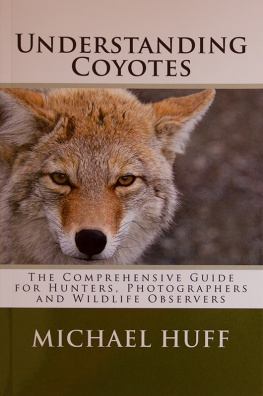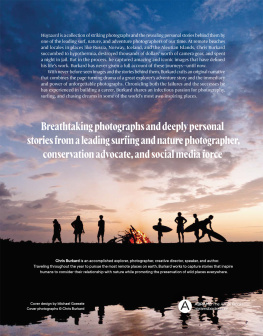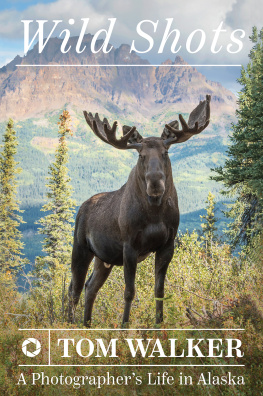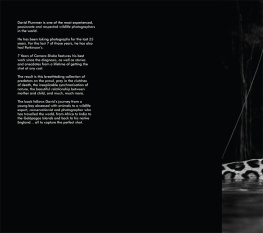The Itinerant Photographer
Photographs from Five Years of Wandering with
Wildlife and the Stories behind Them
By Max Allen

Red Fox in Winter Ruff
Dedicated to
Elizabeth Powell and Ingwe
For living their lives in a way
that will always inspire me.
rd Edition
Text Copyright: 2010, 2013, 2015 by Max Allen
Photography Copyright: 2010, 2013, 2015 by Max Allen
Cover Design by Rochelle Victor
All Rights Reserved.
Published by the Animalia Press

Mountain Skyline Sunrise
Introduction
Collected here in one volume are photographs I took during the five-year period I spent traveling across North America in search of wild animals. My travels took two forms: First, I travelled from place to place in search of wild places and wild animals. Second, once I found a photogenic wild animal, I wandered with the individual or group on their daily journeys.
My travels took me from my native New England down to the tip of Florida, up and across the wilds of Montana, along the coasts of California, and to many places in between. As you will be able to tell from the photos I have selected, it was the Rocky Mountains that captured my imagination during this time. I traveled, time and again, from Montana down through Wyoming and Colorado to New Mexico.
It was the animals themselves that drew me. I have found that there is no moment so real as one spent with a wild animal. In my youth, I spent countless hours sneaking up on wild animals until I was close enough to touch themand in many cases I did indeed softly touch them before sneaking away again. It was the challenge itself in my early days that helped me perfect the art of getting close to animals but the draw of the wild was always present.
Later, after college, when I was trying to find my way in the world, I turned to photography. At the time, I was looking for a way to share my gifts while remaining true to myself and my goals. My friends always enjoyed hearing my tales of being close to wildlife, and they always wanted to hear more. After some contemplation, I realized that the best way for me to share my gifts and abilities with the world would be to photograph the animals and show the resulting images.
Thus began my love affair with wildlife photography. And really, what is not to love? I spend time with the wild animals I adore, travel across our beautiful country seeking out new and wild places, and share with others what I enjoy most in the world.
Learning the art of photography was an intensive journey in itself. Recording the animals I was seeing wasnt nearly as easy as I thought it would be. There were many technical aspects I needed to learn, from how to capture the good light and photograph my subject free from a distracting background to learning how to use the correct exposure.
I began learning the art of photography on a film camera. I now shoot exclusively with digital film, and though I would never go back, I am always glad I took the time to learn on film. Its unforgiving natureslide film, in particularpushed me to learn film speed, exposure, and lighting to a degree I dont think I ever would have with a digital camera.
After switching to digital and seeing the improvements in quality and the abilities of my new camera, I took all of my film negatives and dumped them in the trash. In many ways it was an act of graduating to the next stage: I had spent years photographing animals on film and had taken many memorable photographs. It was, however, a training period, and by freeing myself of my past, I was ready to begin anew.
I could have spent a few years re-photographing everything I had thrown out, but instead, the photography of new and exciting wildlife drew me further and further from my home. Eventually, this led to an in-depth knowledge of many great places ideally suited for photographing wildlife throughout the lower forty-eight states.
And now I find myself setting even further afield. My graduate studies have led me to split my time between California and New Zealand. The allure of the wild continues to call me, ever further it seems, with ever more exotic species.
My typical photographic philosophy is a mix of my biology background and my photographer nature. My goal is to learn about the animal while I photograph it. With this in mind, what I like to do is find an animal and then spend the day following it as it goes about its daily life.
This is not an easy task by any means. The nature of following the animals through the wild is a constant push to my awareness and physical abilities. The physical exertion involved means I need to limit the weight of my photographic gear, and a 400mm lens is most often the largest lens I carry.
Though not an easy challenge, it is a challenge I love. Between my work as a biologist and a photographer, I spend most of my time with wildlife. Learning about and photographing animals as they go about their daily lives is something I will be happy to do for all of my days on this earth.
I dont see photographing wildlife as the end, however, for wild animals are constantly embattled by and with our modern world. With so many battles on a local, national, and global scale, there are always limitless opportunities to help preserve our wild lands and wildlife.
My hope is that you, the reader, are inspired by this collection of photographs and, in your own way, both seek out the wild animals of this country and help in their continued preservation.
I would like to thank Mark Elbroch, Rochelle Victor, Dan Gardoqui, Jerilyn and David Brownstein, Preston Taylor, Jill Wallace, Nate Harvey, and my parents for their support throughout the project. In particular, I would like to thank Mark Elbroch for his constant support and feedback, Rochelle Victor for her exquisite cover design, and Dan Gardoqui for his continual encouragement with my wildlife photography.

Sandhill Crane Flock Silhouetted at Sunset

Bobcat Surrounded by Pine
Gold Hill, Colorado
400mm, ISO 100. Evaluative metering at 0: 1/15 second at f/5.6
The wild cats of North America are some of the most difficult and elusive animals to photograph. One day in early winter, I was out hiking when I spotted a lone bobcat hunting in an open field. Eventually, it moved off into the surrounding woods. Although they were open woodlands, the bobcat was able to merge with the darkness and shadow and effectively disappear from my sight.
Fortunately for me, the birds of the forest have much sharper eyes than mine. There were a pair of Stellers jays and a black-billed magpie that had also spotted the bobcat. The birds were nervous and they followed it through the woods, calling loudly from above. This created quite a ruckus, so by listening to the location of the birds, I could tell where the bobcat was. After listening for a few minutes, I could tell the general direction in which the bobcat was headed, and I ran out ahead of its path.
When I was roughly 1,000 feet ahead of the bobcat and birds, I stopped and listened. Assured they were still headed toward me, I started stalking slowly back towards the bobcat. When I was able to see the birds, I started moving very cautiously. After crawling closer and carefully scanning the area, I spotted the bobcat grooming in a thicket of young pines. I crawled forward inch by inch, pausing when the bobcat took a break from grooming to look around. In time, I was able to take the portrait shot I was looking for, with an added bonus of observing the bobcats behavior up close.
Next page

